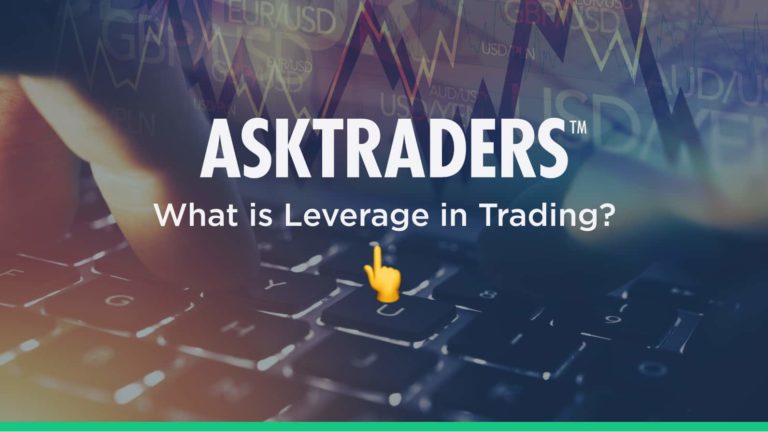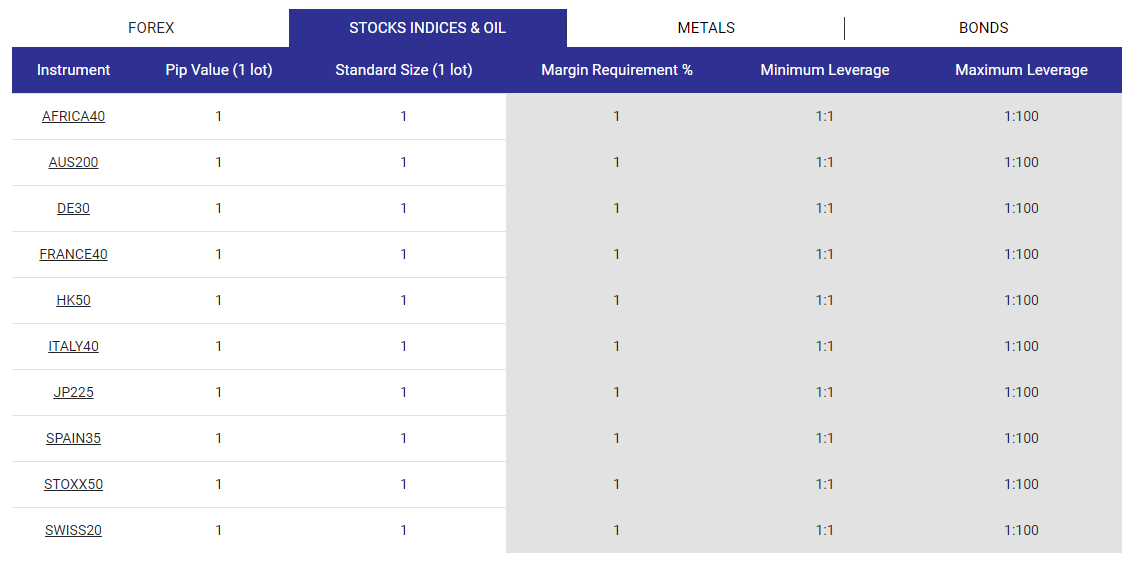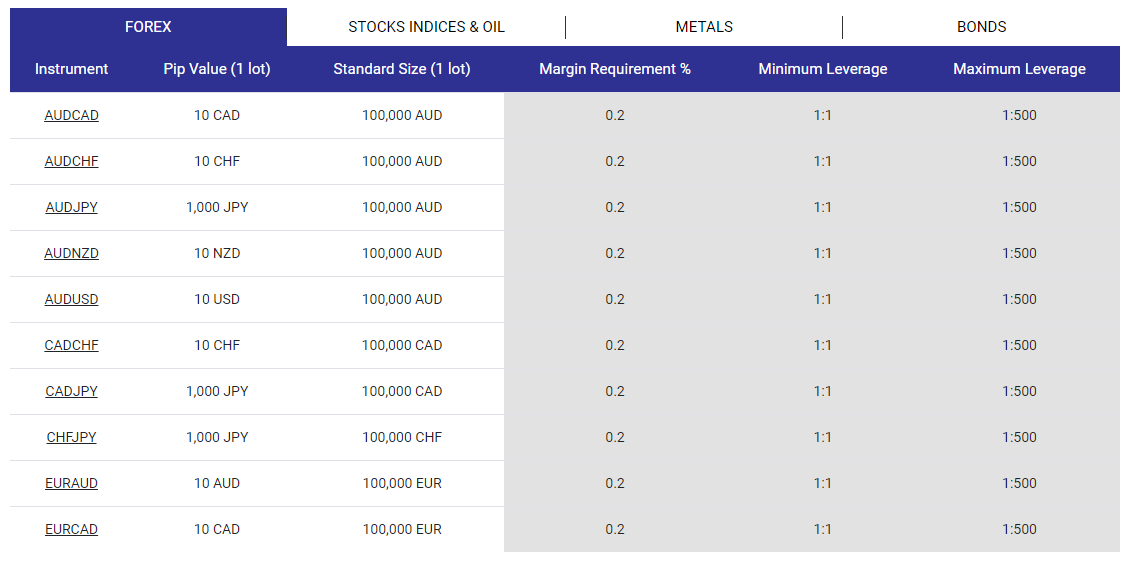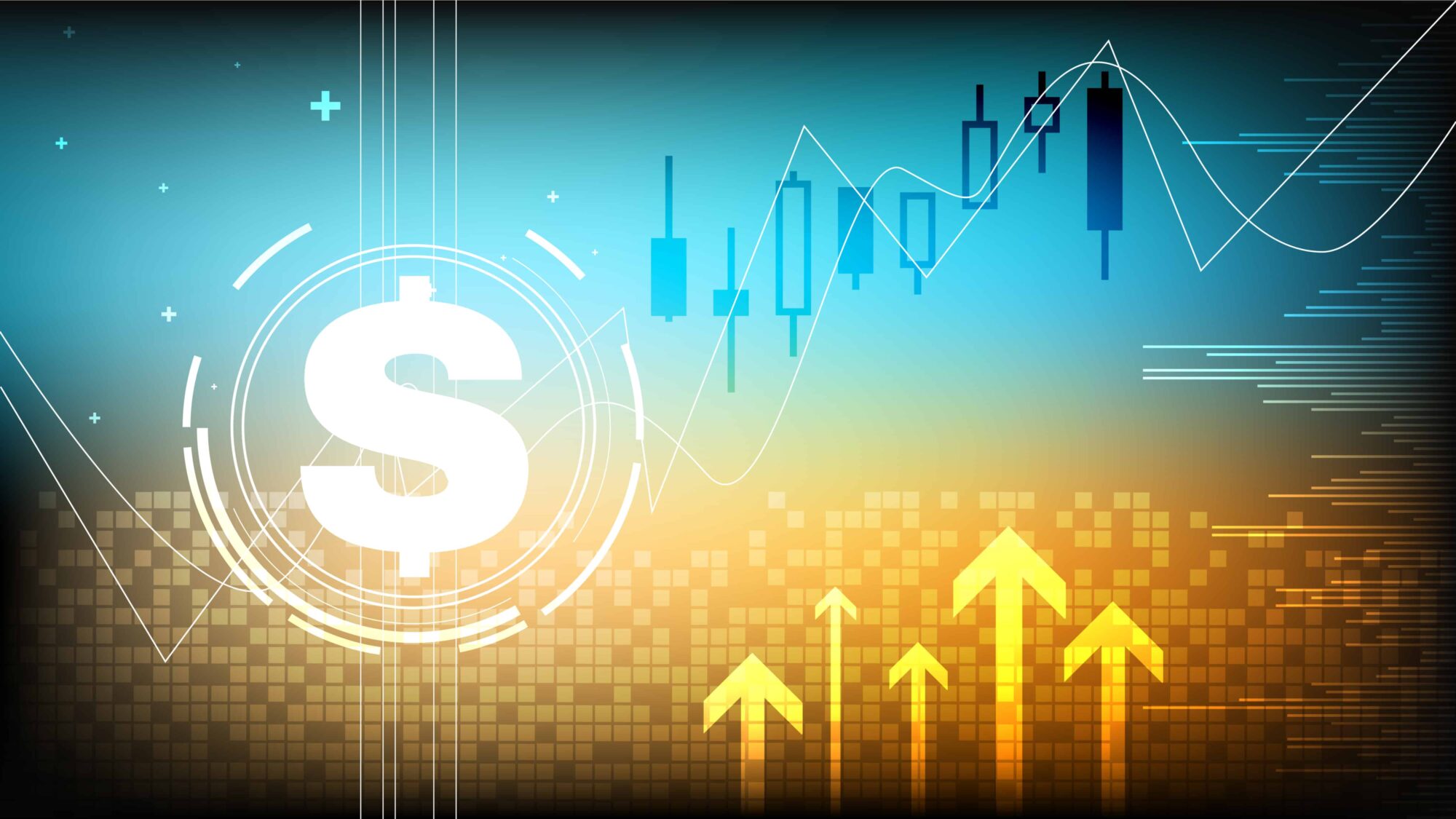
For example, a forex broker who offers 1:20 leverage allows a trader to open trades worth up to 20 times their account balance. This process is called buying “on margin” as traders are placing an initial deposit, known as margin, with the view to opening a leveraged trading position that exceeds their upfront investment.
In layman's terms, leverage is essentially borrowed money used as part of a trader's strategy to increase their exposure and potential returns without increasing their investment. Leverage can be used in a range of markets including forex, shares, indices and cryptocurrencies.
There are different leveraged products available to traders depending on the markets in which they operate. Some of the most popular products include contracts for difference (CFDs), spread bets, options and forex trades. Those products are called financial instruments and traders offer them to provide greater exposure to markets with a comparatively smaller initial capital investment. While all of the instruments amplify potential profits and losses, they have unique characteristics that mean they work differently. Not every leveraged product is the same.

Example of leverage offered by Tickmill for stocks indices & oil
For example, CFDs are complex instruments that allow investors to come to an agreement with a broker about the exchange value of a financial product. If you use a CFD, you will not own the underlying asset in question. Instead, you will profit on how the price fluctuates for that asset.
Experienced traders use CFDs to speculate on securities or derivatives movements over time. Traders can make spread bets on the price going up and down. A simple decision in concept, but it requires an in-depth and precise reading of the market.
CFDs have become more prevalent in recent years as they enable investors to “short” by opening at a sell position and to trade on markets that are heading lower and thus to profit from uncertainty and turmoil. CFDs offer low margin requirements and high leverage.

Leveraged exchange-traded funds (ETFs) are another form of leverage and are relatively new, having been made available to personal traders back in 2006. ETFs allow traders to speculate on the direction of the stock market. However, rather than taking positions on individual companies, traders instead aim to take advantage of movements of a benchmark, commodity or index such as the S&P 500.
You can also use leverage with cryptocurrencies. The principle behind margin here is the same as it is for trading forex, which means you can take control of a position by committing a smaller amount of upfront capital.
When working with professional clients to trade with leverage, you can use other financial tools such as a stop loss to mitigate risks by ordering a broker to buy or sell a commodity when it hits a specific price. Doing so will help you to minimise losses.
What Is Leverage in Forex Trading?
Leverage in forex is a relatively simple concept compared to some of the financial instruments in other markets. If you have an active trading account and the forex broker offers leverage, you will be able to trade on it immediately.
Trading with leverage in forex markets allows you to borrow money to invest in currency pairs. Around $6trn in currency is traded on forex every day. Traders analyse the minutiae of price movements and relevant charts and indicators to decide when to enter and exit the market.
Armed with this knowledge, you can use leverage to borrow capital to make a more considerable trade. For example, if you wanted to make a GBP/USD trade worth $10,000, your broker would only require a deposit of $500 with 20:1 leverage. You are borrowing $9,500 to complete the transaction.

Example of leverage offered by Tickmill in forex trading
Opening a position with a broker requires an initial deposit called the “margin”. You give this margin to the broker to make use of leverage and the broker uses the capital to maintain your position in the market. Using the previous example, the $500 would equate to a 5% margin rate.
Margin-based leverage in forex differs with each broker. You can usually get access to high leverage of up to 1:500 but reputable brokers often limit this to 1:50. The margin requirement for higher amounts of leverage is lower.
Brokers are happy to offer ample leverage in forex due to the markets' scale and liquidity and their inherent lower volatility compared to something like equity shares.
Advantages and Disadvantages of Using Leverage in Trading
Leverage equips traders with the ability to use more capital to increase the size of respective positions on any given market. There are upsides and downsides to this strategy and you should always be looking to balance aspects of each to keep your broker accounts active.
One of the major advantages of leverage in trading is that it allows you to make more efficient use of your capital to trade in markets that may otherwise be unavailable to you. When used judiciously, leverage can drive short term and long-term gains in the market.
Leverage can increase your profits without having to invest as much “unleveraged” funds. It boosts your capital and multiplies the stakes to drive greater returns from your moves in the market.
For example, if you deposited $500 and used 1:50 leverage to enter the market and open a $25,000 position earning a 2% profit, you would gain $500, which is a 100% return. In contrast, if you had to invest $25,000 unleveraged and took out the same position, the $500 gain would only provide a 2% return.
That also increases your capital efficiency as it may have taken days or even weeks for you to generate profits from unleveraged positions. The profits can then be reinvested to increase the frequency and size of yields.

However, using leverage to make trades can magnify losses, so you must try to execute some risk management to reduce the chances of losing your money. That is because using leverage to open a large position will lead to a significant loss if the market goes against you.
Losing your money rapidly due to unforeseen changes in the market can increase your margin call risk. As noted earlier, margins are the amount of capital you need to stake, a set percentage for each transaction. When you fall below this threshold, your broker may make a margin call.
You will then need to deposit more money or securities or sell some of your assets to meet the threshold – maintenance margin – again. This highlights how leverage is a constant liability as your account will always need to cover the principal cost of the leverage regardless of the transaction's success.
Some of the advantages of using leverage include:
- Increases capital
- Can take larger positions
- Magnifies profits
- Increases frequency and size of yields
Some of the disadvantages of using leverage include:
- Magnifies losses
- Difficult to use for beginners
- Margin call risks
- Give up ownership or delivery of an asset
High Leverage Trading
What is High Leverage?
There is no standard definition of high leverage; however, given that most major regulators cap the leverage on most tradeable products at 1:30 to 1:50, most experts regard leverage that exceeds these standards as being high leverage. Therefore, we can comfortably classify leverage levels greater than 1:50 as high leverage. Brokers who offer leverage levels starting at 1:100 up to 1:1,000 are generally classified as high-leverage brokers based on the above standards.
Which Brokers Offer/Allow High Leverage Trading?
Most stringent regulators such as the UK's Financial Conduct Authority (FCA) and the Australian Securities and Investment Commission (ASIC) limit the leverage that licensed brokers can offer their clients to a maximum of 1:50.
However, not all global regulators have such limits, which has made it possible for brokers to offer higher leverage by registering with more lenient regulators. Brokers who provide high leverage are usually licensed by regulators such as the Cyprus Securities and Exchange Commission (CySEC), the Financial Services Commission (FSC) of Mauritius, and the Malta Financial Services Authority, among others.
Some major brokers regulated by strict regulators such as the ASIC and FCA also offer high leverage trading by operating subsidiaries licensed by other lenient regulators. Therefore, you might find that a broker regulated by the FCA or ASIC also provides high leverage trading through subsidiaries domiciled in other jurisdictions.
Be aware that if you have a trading account that allows you to trade with high leverage levels, you might not be protected by the stringent requirements of the strict regulators. For example, the FCA guarantees the protection of investor funds up to £50,000 if a regulated broker goes bankrupt and customers' funds are lost.
The US Commodities Futures Trading Commission also offers similar protections to investors in regulated brokers and funds. However, you might not be covered by the guarantees offered by these regulators despite your broker being licensed by them if your account allows for extra leverage. That could mean your account with the broker is held under a subsidiary registered in a less-stringent jurisdiction.
How to Trade with High Leverage
Trading with high leverage is a double-edged sword as the potential returns are relatively high but so are the potential losses. High leverage brokers allow you to trade lots that you would never trade on an account that only provides leverage say up to 50:1.
For example, it is not surprising to see a trader with a $500 account making trades worth up to five lots, hence, risking their entire account balance if they make a 10-pip loss. Most conservative brokers would not allow a client with a $500 account balance to make trades that exceed a 0.5 lot since this gives the trader a 100-pip safety margin.
Therefore, you should consider such factors when deciding whether to make high leverage trades or conservative trades. Remember that your ultimate goal as a trader is to control your risk so that you can last in the markets long enough to become a profitable trader. Consistently trading with high leverage is one of the fastest ways to ensure that you have a very short trading career as the risk of blowing your account is relatively high.

Popular High Leverage Products
Some of the popular high leverage trading products available in the markets include inverse and leveraged ETFs. The Lyxor EURO STOXX 50 Daily (2x) Leveraged UCITS ETF is a popular high leverage product among traders tracking European markets.
Other popular high leverage regulated products include inverse US stock index ETFs such as the ProShares UltraPro Short S&P 500 (SPXU) and the ProShares UltraPro Short Dow30 (SDOW).
These high leverage products allow you to compound your profits by up to 3X the actual movement in the underlying stock index, but they also compound your losses.
Therefore, you have to be aware of your full risk exposure when trading such products to ensure that you do not blow your account when prices move against you.
Conclusion
The variety of leveraged products available to traders are vital financial tools that can be used to gain more exposure to a market, increase capital, and take up larger positions that can deliver more significant profits. While there are risks, leverage in trading is generally viewed as a net positive. Without these tools and the professional clients who provide them, traders would find it considerably more challenging to execute trades daily and to succeed in the forex and stock markets.
